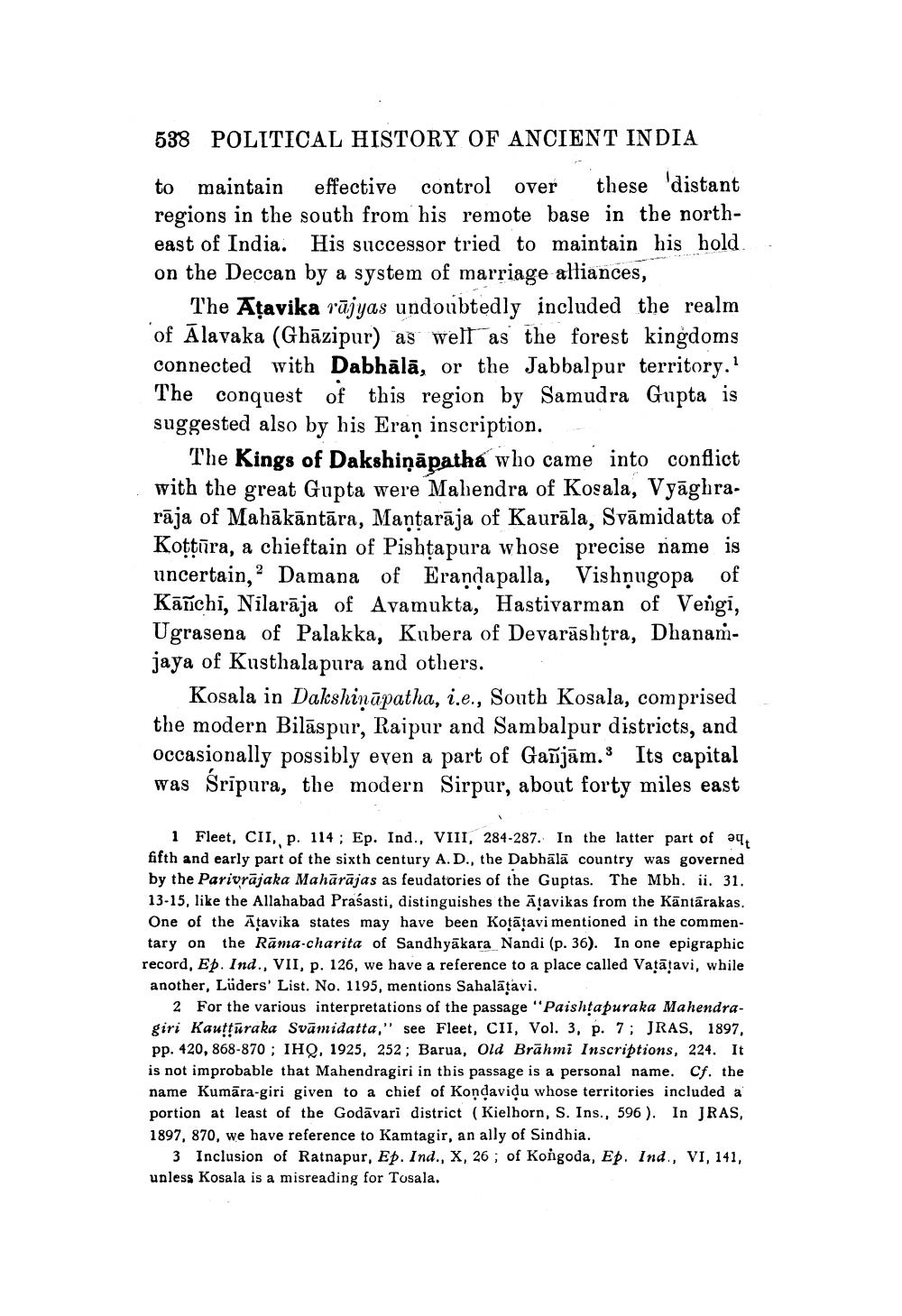________________
538 POLITICAL HISTORY OF ANCIENT INDIA to maintain effective control over these 'distant regions in the south from his remote base in the northeast of India. His successor tried to maintain his hold on the Deccan by a system of marriage alliances,
The Ațavika rūjyas undoubtedly included the realm of Alavaka (Ghāzipur) as well as the forest kingdoms connected with Dabhālā, or the Jabbalpur territory." The conquest of this region by Samudra Gupta is suggested also by his Eran inscription.
The Kings of Dakshiņāpatha who came into conflict with the great Gupta were Mahendra of Kosala, Vyāghrarāja of Mahākāntāra, Mantarāja of Kaurāla, Svāmidatta of Kottūra, a chieftain of Pishtapura whose precise name is uncertain,” Damana of Erandapalla, Vishņugopa of Kāñchi, Nilarāja of Avamukta, Hastivarman of Vergi, Ugrasena of Palakka, Kubera of Devarāshtra, Dhanamjaya of Kusthalapura and others.
Kosala in Dakshināpatha, i.e., South Kosala, comprised the modern Bilāspur, Raipur and Sambalpur districts, and Occasionally possibly even a part of Gañjām. Its capital was Sripura, the modern Sirpur, about forty miles east
1 Fleet, CII, p. 114 ; Ep. Ind., VIII, 284-287. In the latter part of 34, fifth and early part of the sixth century A.D., the Dabhālā country was governed by the Parivrājaka Mahārājas as feudatories of the Guptas. The Mbh. ii. 31. 13-15, like the Allahabad Prasasti, distinguishes the Ātavikas from the Kāntārakas. One of the Atavika states may have been Koţātavi mentioned in the commentary on the Rāma.charita of Sandhyākara Nandi (p. 36). In one epigraphic record, Ep. Ind., VII, p. 126, we have a reference to a place called Vatātavi, while another, Lüders' List. No. 1195, mentions Sahalātavi.
2 For the various interpretations of the passage "Paishtapuraka Mahendragiri Kauttūraka Svāmidatta," see Fleet, CII, Vol. 3, p. 7; JRAS, 1897, pp. 420, 868-870 ; IHQ, 1925, 252; Barua, old Brahmi Inscriptions, 224. It is not improbable that Mahendragiri in this passage is a personal name. Cf. the name Kumāra-giri given to a chief of Kondavidu whose territories included a portion at least of the Godavari district (Kielhorn, S. Ins., 596 ). In JRAS, 1897, 870, we have reference to Kamtagir, an ally of Sindhia.
3 Inclusion of Ratnapur, Ep. Ind., X, 26; of Kongoda, Ep. Ind., VI, 141, unless Kosala is a misreading for Tosala.




